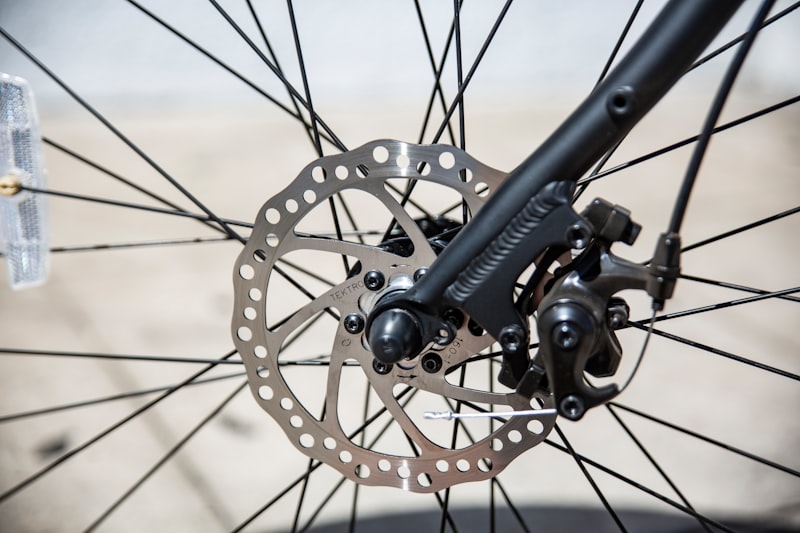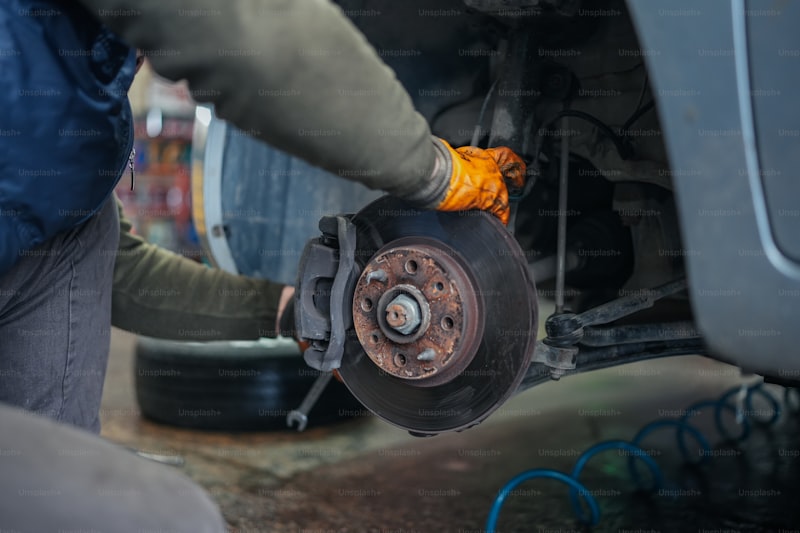Replacing brake pads is crucial for maintaining your vehicle’s safety and performance. Over time, brake pads wear down due to friction against the brake rotors, which can lead to decreased braking efficiency and potential safety hazards. Knowing how to replace them yourself can save you money and ensure your brakes are in top condition. Here’s a step-by-step guide to help you through the process:
Firstly, gather your tools and materials: new brake pads (ensure they match your vehicle’s specifications), a lug wrench, a jack and jack stands, a C-clamp or brake piston tool, and possibly brake cleaner and lubricant.
-
Prepare Your Vehicle: Park on a flat surface and engage the parking brake. Loosen the lug nuts on the wheel where you’re replacing the brake pads.
-
Lift and Secure the Vehicle: Use the jack to lift the car, then secure it with jack stands for safety. Remove the lug nuts and take off the wheel.
-
Remove Old Brake Pads: Locate the brake caliper and remove the bolts holding it in place. Carefully lift off the caliper and suspend it using a wire hanger or bungee cord to avoid damaging the brake hose.
-
Replace Brake Pads: Take out the old brake pads from the caliper bracket. Use a C-clamp or brake piston tool to compress the caliper piston back into the caliper housing. Install the new brake pads into the bracket.
-
Reassemble and Test: Slide the caliper back over the brake pads and secure it with bolts. Put the wheel back on, tighten the lug nuts, and lower the vehicle. Repeat the process for the other side if necessary.
-
Check and Bed New Brake Pads: Before driving, pump the brake pedal a few times to ensure it’s firm. Drive slowly at first and apply the brakes gently to bed the new pads properly.
By following these steps, you can replace your brake pads confidently and ensure your vehicle stops smoothly and safely. Regular brake maintenance is essential for your safety on the road, so don’t hesitate to perform this task when needed.
Master Your Brakes: A Detailed Step-by-Step Guide to Replacing Brake Pads
Brake pads are crucial components in your car’s braking system, responsible for creating friction against the brake rotors, which slows down and stops your vehicle. Over time, they wear out due to this constant friction, necessitating replacement to maintain optimal braking efficiency.

Before diving in, ensure your safety by parking on a flat surface and engaging the parking brake. Chock the wheels to prevent any unintended movement. Additionally, gather your tools: new brake pads, a lug wrench, a C-clamp, and potentially a jack and jack stands if necessary.
Start by loosening the lug nuts on the wheel you’re working on, then lift the vehicle with the jack and secure it on jack stands. Remove the wheel to access the brake caliper. With a wrench, carefully unbolt the caliper, taking care not to strain the brake line.
Once the caliper is free, carefully remove the old brake pads. Take this opportunity to inspect the brake rotor for any signs of damage or wear. Next, using the C-clamp, compress the caliper piston back into its housing to accommodate the thicker new brake pads.
Slide the new brake pads into place on the caliper bracket. Ensure they fit snugly. Reattach the caliper over the pads and bolt it securely. Put the wheel back on, tighten the lug nuts, and lower the vehicle. Finally, pump the brake pedal a few times to seat the pads against the rotor before taking your car for a test drive.
DIY Automotive Maintenance: How to Easily Replace Your Car’s Brake Pads
Replacing your car’s brake pads is an essential maintenance task that ensures your vehicle stops safely and effectively. Doing it yourself can save you money and give you a deeper understanding of your car’s mechanics. Here’s a step-by-step guide to help you through the process.
Firstly, gather the necessary tools and materials: new brake pads, a jack, jack stands, lug wrench, c-clamp, and potentially a brake piston compressor tool depending on your vehicle.
Start by parking on a flat surface and engaging the parking brake. Loosen the lug nuts on the wheel of the brake pads you’re replacing, then lift the car using the jack and secure it with jack stands.
Next, remove the lug nuts and take off the wheel to access the brake assembly. Locate the brake caliper and remove the bolts securing it to the brake assembly. Gently pry the caliper off and suspend it using a wire hanger or bungee cord to avoid straining the brake line.
Take out the old brake pads from the caliper bracket. Use a c-clamp to compress the brake piston back into the caliper if necessary, making room for the new, thicker brake pads.
Before installing the new brake pads, apply a thin layer of brake grease to the backs of the pads where they contact the caliper and piston. This reduces noise and prevents squeaking.
Slide the new brake pads into place on the caliper bracket. Reattach the brake caliper over the new pads and secure it with the bolts. Double-check that everything is securely tightened.
Put the wheel back on and tighten the lug nuts. Lower the car from the jack stands and tighten the lug nuts in a star pattern to ensure even pressure.
Finally, pump the brake pedal a few times to seat the new pads against the rotor. Check the brake fluid level in the reservoir under the hood and top it up if necessary.
Regularly inspecting and replacing your brake pads ensures your car stops safely. By following these steps, you can perform this essential maintenance task confidently and effectively.
Save Money and Stay Safe: Learn How to Change Brake Pads with This Expert Guide
Firstly, gather your tools and materials: new brake pads, a lug wrench, a jack, jack stands, a C-clamp or brake caliper tool, and possibly a brake cleaner and lubricant.
Start by parking on a flat surface and engaging the parking brake for safety. Loosen the lug nuts on the wheel where you’ll be replacing the brake pads, but don’t remove them completely just yet.
Next, jack up the car using the manufacturer-recommended jacking points and secure it with jack stands. Once the car is safely elevated, remove the lug nuts and take off the wheel to access the brake caliper.
Locate the brake caliper assembly and carefully remove the bolts securing it using a wrench or socket. Gently slide the caliper off the rotor and rest it on a suitable support to avoid straining the brake line.
Now, remove the old brake pads from the caliper bracket. Take note of how they are positioned as you’ll need to install the new pads in the same orientation.
Before installing the new pads, it’s a good idea to clean the brake caliper and rotor with brake cleaner to remove any dirt or debris. Apply a thin layer of brake lubricant to the contact points on the caliper where the pads will sit.
Insert the new brake pads into the caliper bracket, ensuring they are securely in place. If necessary, use a C-clamp or brake caliper tool to compress the caliper piston back into its housing to accommodate the new, thicker pads.
Once the new pads are installed and everything is back in place, carefully reattach the caliper to the rotor using the bolts you removed earlier. Double-check that all bolts are tightened to the manufacturer’s specifications.
Put the wheel back on, tighten the lug nuts, and lower the car back to the ground. Give the brake pedal a few gentle pumps to bring the caliper piston back into contact with the pads before driving.
Brake Pad Replacement Made Simple: Your Complete Walkthrough
Firstly, gather your tools: a lug wrench, a jack, jack stands, a C-clamp or brake caliper tool, a small bungee cord or wire, a turkey baster or syringe, brake grease, and of course, your new brake pads.
Start by parking on a level surface and engaging the parking brake. Loosen the lug nuts slightly, then jack up the car and secure it on jack stands. Remove the wheels and locate the brake caliper, which is usually held in place by bolts or pins.
Next, carefully remove the caliper bolts and slide the caliper off the rotor. Hang the caliper using a small bungee cord or wire to avoid putting stress on the brake line. Now, the old brake pads can be easily removed from the caliper bracket.
Before installing the new brake pads, it’s a good idea to clean the caliper and rotor with brake cleaner spray. Apply a thin layer of brake grease to the back of the new brake pads to prevent noise and vibration.
Using a C-clamp or brake caliper tool, compress the caliper piston back into its housing to accommodate the new, thicker brake pads. Ensure the piston is fully retracted to avoid any fitment issues.
Once the new pads are in place, reassemble the caliper over the rotor and tighten the caliper bolts securely. Double-check that everything is properly seated and then reinstall the wheels. Lower the car, tighten the lug nuts in a star pattern, and you’re done!
Step-by-Step Brake Pad Swap: Everything You Need to Know
Swapping your brake pads is a key maintenance task that ensures your car stops safely and smoothly. Whether you’re a novice or seasoned DIY enthusiast, understanding the process can save you time and money. Here’s a detailed guide on how to replace your brake pads step-by-step.
First things first, gather all the necessary tools. You’ll typically need a lug wrench, a jack, jack stands, a C-clamp, and of course, your new brake pads.
Find a flat, level surface to work on. Ensure your car is in park with the parking brake engaged. Safety first!

Before jacking up your car, loosen the lug nuts on the wheel where you’ll be replacing the brake pads. This makes it easier to remove the wheel once the car is elevated.
Use the jack to lift your car, and place jack stands securely under the frame for added safety. Double-check that the car is stable before proceeding.
With the lug nuts fully loosened, remove the wheel. This gives you access to the brake caliper and rotor.
Locate the brake caliper, which is typically held in place by bolts or pins. Remove these carefully, then lift the caliper off the rotor. Be cautious not to strain the brake line.
Take out the old brake pads from the caliper. Use the C-clamp to compress the caliper piston back into its housing. Insert the new brake pads into the caliper, ensuring they fit snugly against the rotor.
Carefully place the caliper back over the rotor and secure it with the bolts or pins. Ensure everything is tightened to specification.
Slide the wheel back onto the hub and tighten the lug nuts by hand. Lower the car from the jack stands and finish tightening the lug nuts with the lug wrench.
Before hitting the road, pump the brake pedal a few times to restore brake pressure. Test the brakes at low speeds to ensure they’re functioning correctly.
By following these steps, you can confidently swap out your brake pads without the hassle of a mechanic. Remember, regular brake maintenance is crucial for your safety and the longevity of your vehicle.
Frequently Asked Questions
How often should brake pads be replaced?
Discover how frequently you should replace brake pads to ensure optimal vehicle safety and performance. Get clear guidelines on when to schedule this essential maintenance for your vehicle’s braking system.
Can I replace brake pads myself, or should I visit a mechanic?
Learn when it’s feasible to replace brake pads yourself and when it’s advisable to consult a mechanic. Get guidance on understanding the complexity of the task, required tools, and safety considerations.
What steps are involved in replacing brake pads?
This FAQ provides a concise guide outlining the essential steps required to replace brake pads on a vehicle. It covers preparation, tools needed, removal of old brake pads, installation of new pads, and proper braking system testing and bedding-in procedures.
What are the signs that brake pads need replacing?
Discover signs indicating your brake pads need replacing. Look for squealing or grinding noises, longer stopping distances, a pulsating brake pedal, or a dashboard brake warning light. Regular inspections ensure safe driving.
What tools are required to replace brake pads?
Discover the essential tools needed to replace brake pads effectively with our concise guide. Learn about the necessary equipment for a successful brake pad replacement.


